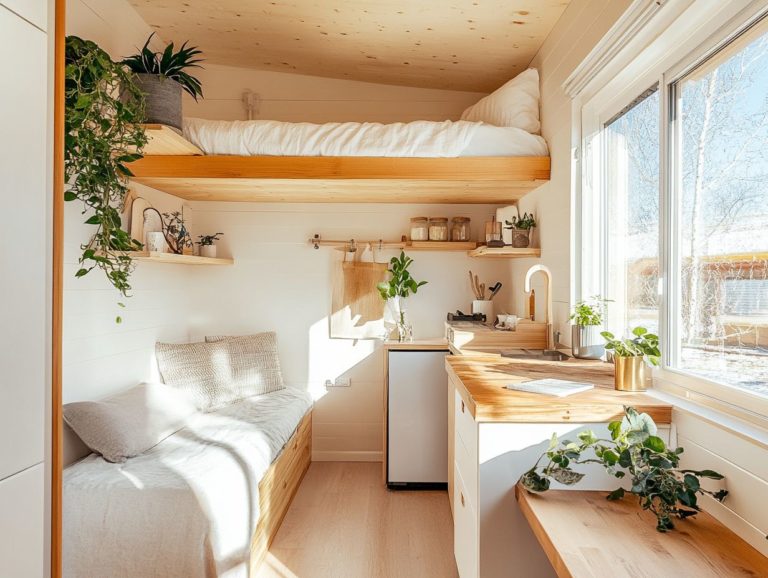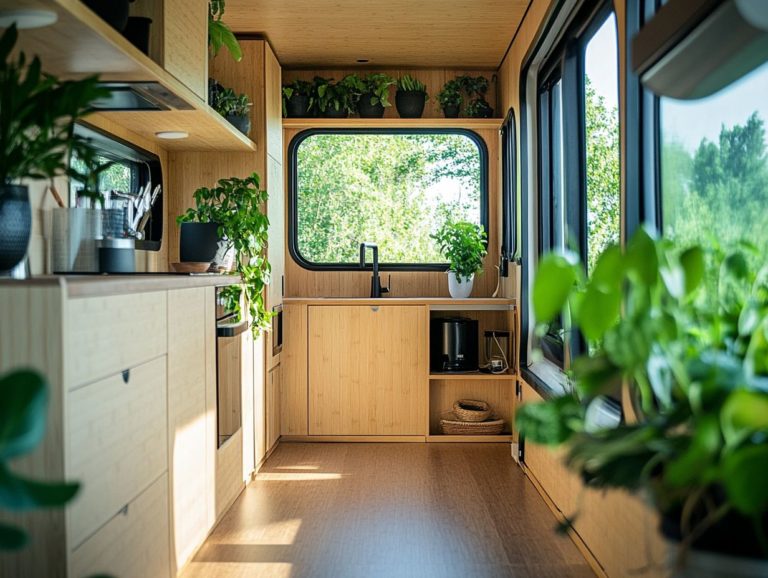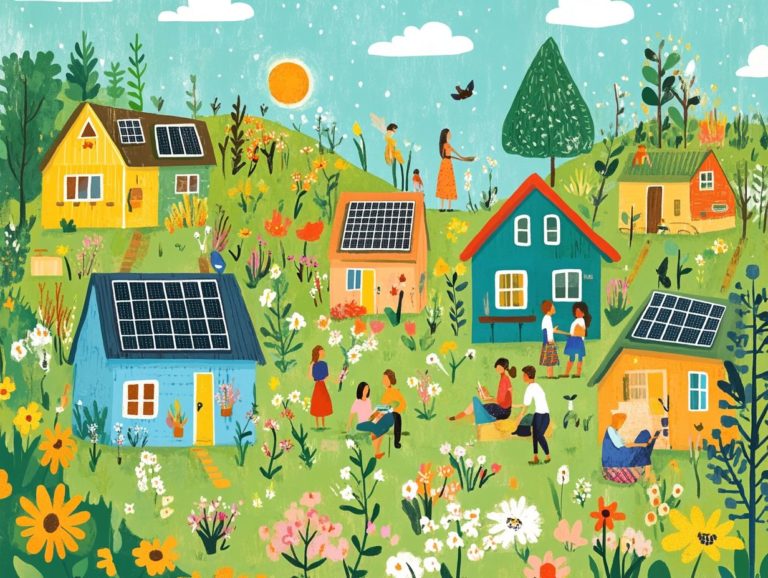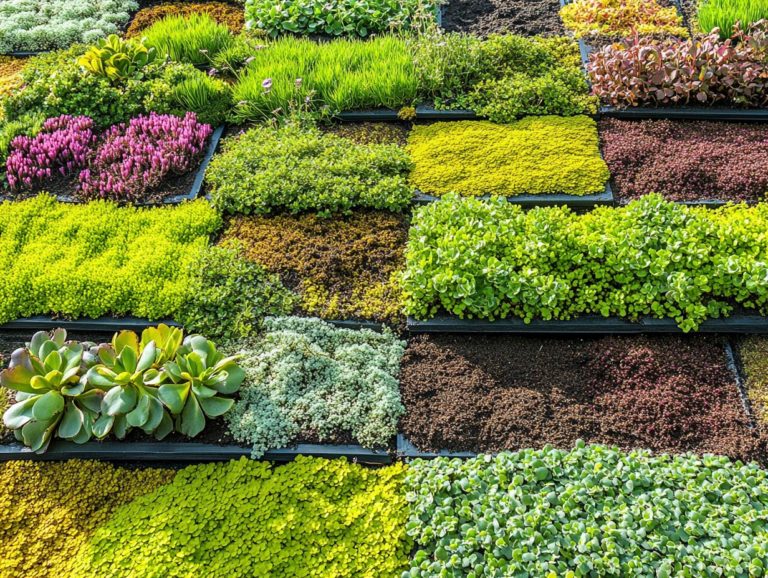Sustainable Building Materials for Tiny Homes
As the tiny house movement gains momentum, focusing on sustainability in construction becomes vital. Building with sustainable materials minimizes environmental impact and offers significant cost savings.
Get ready to explore the amazing benefits of using eco-friendly materials in tiny home construction! This article highlights various types such as recycled, natural, and renewable options. We ll cover key considerations for selecting these materials, showcase successful case studies, and provide practical tips for incorporating sustainability into your tiny living project.
Embrace the future of construction and discover how to create a tiny home that is both stylish and environmentally friendly.
Contents [hide]
- Key Takeaways:
- Benefits of Using Sustainable Materials for Tiny Homes
- Types of Sustainable Building Materials
- Considerations When Choosing Sustainable Materials
- Availability and Cost
- Examples of Sustainable Materials for Tiny Homes
- Case Studies and Success Stories
- Tips for Incorporating Sustainable Materials into Tiny Home Construction
- Frequently Asked Questions
- What are some examples of sustainable building materials for tiny homes?
- Why is it important to use sustainable building materials for tiny homes?
- Are sustainable building materials more expensive than traditional materials?
- Are there any disadvantages to using sustainable building materials for tiny homes?
- Can I make my tiny home entirely out of sustainable building materials?
Key Takeaways:
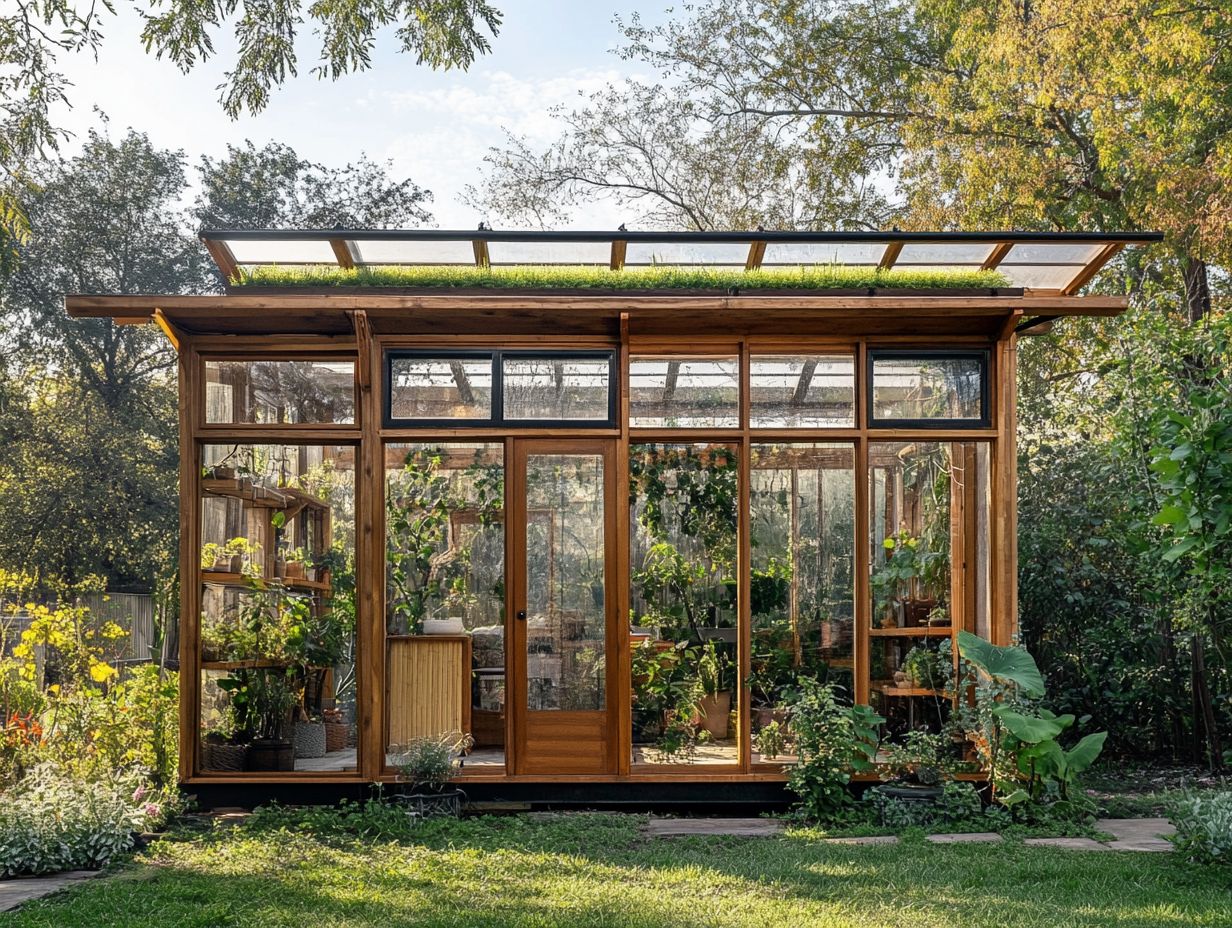
- Using sustainable materials for tiny homes helps the environment and saves money.
- Consider recycled, natural, and renewable materials for your build.
- When picking materials, think about durability, availability, and cost to achieve the best results.
Defining Sustainability in Construction
Sustainability in construction means building in ways that protect the environment while using resources wisely. This holistic approach addresses environmental concerns and aligns with the growing allure of the tiny house movement, which champions simplicity and economical living.
By incorporating eco-friendly materials like bamboo and recycled metals, you can significantly decrease reliance on non-renewable resources, promoting sustainable living. Strategies like passive solar design and rainwater harvesting showcase a genuine commitment to resourcefulness and water conservation.
Embracing these sustainable practices reduces your ecological footprint while opening the door to financial freedom and a simpler lifestyle. You ll find that lower utility bills and decreased maintenance costs contribute to a more streamlined, fulfilling lifestyle, allowing you to enjoy the rewards of mindful living within your eco-friendly home.
Benefits of Using Sustainable Materials for Tiny Homes
Using sustainable materials in your tiny home construction not only elevates your commitment to the environment but also brings considerable cost savings and long-term advantages that align with tiny living.
By choosing eco-friendly homes that emphasize low maintenance and water conservation, you can pave your way to financial freedom while fully engaging in the tiny house movement and its principles of modular design.
Materials like bamboo, natural paints, and thermally modified wood not only minimize your carbon footprint but also improve the overall quality and durability of your tiny house.
Act now to embrace sustainable living! Start planning your eco-friendly tiny home today!
Environmental Impact and Cost Savings
The environmental impact of using sustainable materials in tiny homes is truly remarkable! It helps minimize your carbon footprint throughout the building’s lifecycle and encourages sustainable living. By incorporating high-efficiency appliances and greywater recycling systems which reuse water from sinks and showers you can substantially reduce your utility costs while also fostering a healthier planet through innovative insulation and alternative energy sources.
This compelling blend of cost savings and environmental stewardship aligns perfectly with the core values of the tiny house movement, where intentional living and mindful living take center stage.
Choosing reclaimed wood and non-toxic insulation bolsters the structural integrity of your tiny home while reducing your dependence on new resources. This ultimately drives down material costs over time and enhances compact design. For example, a tiny home constructed from reclaimed materials in Oregon showcased a 30% reduction in construction expenses. This demonstrates that eco-friendly choices can lead to significant financial benefits and contribute to financial freedom. Additionally, consider exploring unique flooring options for tiny houses to further enhance your space.
Families with solar panels save more than $100 each month on electricity! This shows how sustainable living is not just good for the planet; it s smart for your wallet too. Such case studies illustrate that adopting green practices is not merely a trend; it s a savvy strategy that delivers both ecological and economic rewards, making tiny living more appealing than ever.
Types of Sustainable Building Materials
Wondering how to make a tiny home more sustainable? Sustainable building materials can be classified into three primary categories: recycled, natural, and renewable. Each offers distinct advantages for tiny homes that can enhance modular design.
When you choose recycled materials, like shipping containers and reclaimed wood, you’re not just minimizing waste; you’re also reducing the demand for new resources and promoting eco-friendly homes.
Opting for natural materials, such as bamboo and eco-friendly paints, can significantly enhance indoor air quality while promoting sustainability and connecting people with nature.
Renewable materials sourced from responsible forestry practices help maintain long-term ecological balance, aligning perfectly with the tiny house movement’s dedication to environmental consciousness and natural light.
Recycled Materials
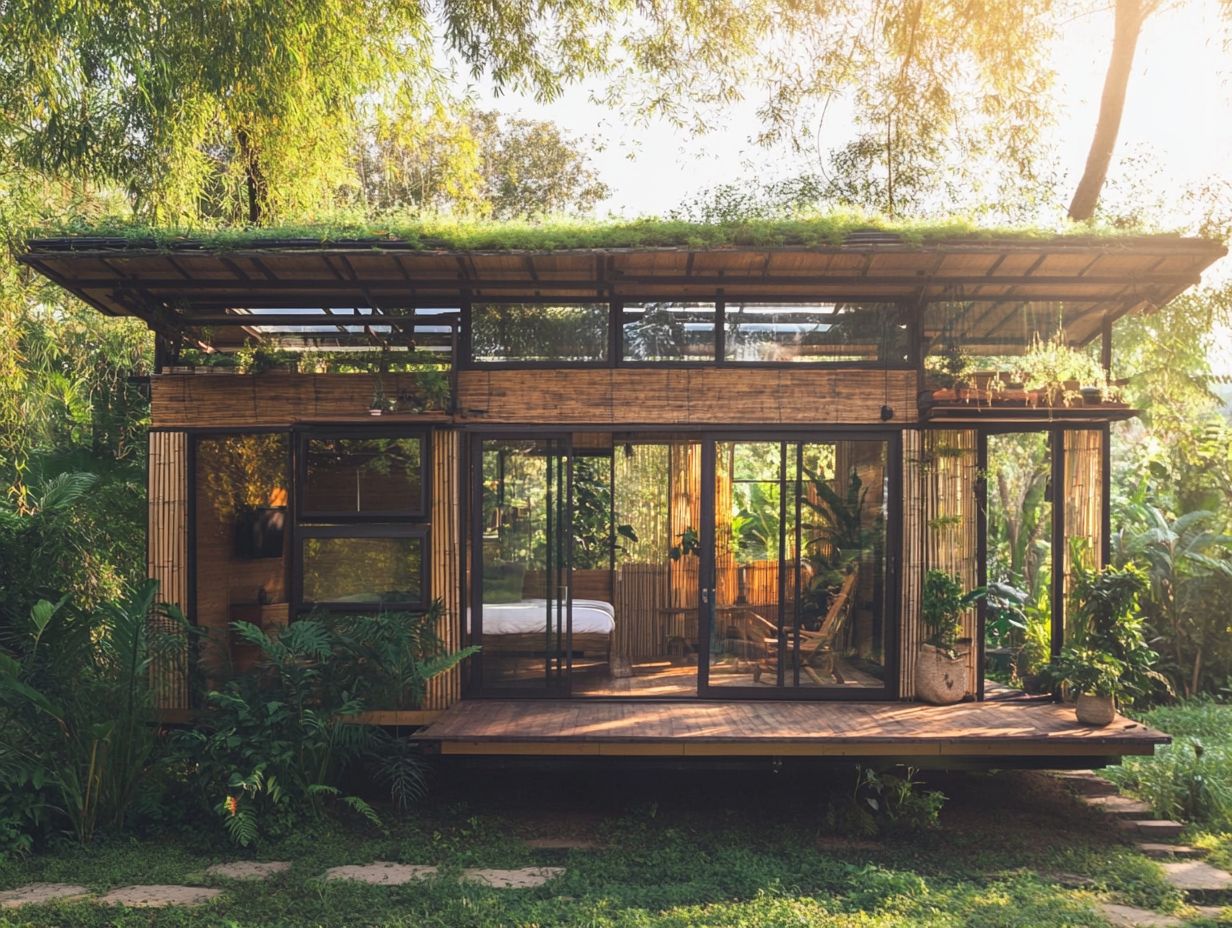
Recycled materials, such as shipping containers and reclaimed wood, are essential elements in sustainable tiny home construction! They offer an exceptional combination of cost-effectiveness and environmental stewardship, paving the way for affordable tiny homes. By repurposing these materials, you can significantly reduce waste and champion eco-friendly practices while crafting innovative insulation living spaces that embody the core principles of the tiny house movement.
Shipping containers can be transformed into stylish, modern homes that not only captivate with their striking appearance but also deliver impressive durability, showcasing the modular design potential of tiny living. Reclaimed wood infuses a rustic charm, adding warmth and character to interiors while decreasing the demand for new timber. This supports environmental consciousness.
Incorporating materials like recycled glass for windows and fixtures not only elevates your home s aesthetic appeal but also enhances energy efficiency, contributing to a reduced carbon footprint.
These strategies lower your carbon footprint and cultivate unique living environments that align with the values of sustainability and creativity. This makes tiny living both practical and visually stunning!
Start your journey to eco-friendly living today!
Natural Materials
Natural materials, such as bamboo and thermally modified wood, are crucial for sustainable tiny homes. They prioritize health and well-being while enhancing natural light.
These materials ensure durability and connect you with nature, creating a harmonious living experience in compact spaces that supports the essence of tiny living.
Utilizing natural substances significantly boosts indoor air quality, minimizing the risks of toxic fumes and allergens often found in synthetic alternatives. This smart choice instantly enhances the health and beauty of your tiny house.
The natural textures and colors evoke a warm and inviting ambiance, emphasizing the value of mindful living in your tiny home.
By incorporating materials like reclaimed wood or cork, you can achieve an aesthetic that resonates with eco-consciousness while championing sustainability. This reflects a lifestyle that values both well-being and environmental stewardship, merging comfort with conscientious living in eco-friendly homes.
Renewable Materials
Renewable materials, particularly those obtained from responsibly managed forests, are vital for fostering sustainability in tiny house construction. They also promote financial freedom.
By opting for materials that are naturally replenishable, you can significantly reduce your environmental footprint while actively contributing to a more sustainable future. This includes incorporating alternative energy sources.
Consider materials like bamboo, reclaimed wood, and cork. Not only do they minimize waste, but they also elevate the aesthetic and functionality of your tiny home.
For example, bamboo thrives remarkably quickly and can be harvested without disrupting the ecosystem. Meanwhile, reclaimed wood eliminates the need for new logging, showcasing the benefits of eco-friendly materials.
By integrating these renewable resources with alternative energy sources, such as solar panels and wind turbines, you can craft an eco-friendly home that reduces dependence on fossil fuels and boosts energy efficiency. (Energy efficiency means using less energy to perform the same task, essential for eco-friendly homes.)
This comprehensive approach conserves essential resources and encourages a lifestyle that embraces harmony with the environment, making a meaningful contribution to sustainability and financial freedom.
Considerations When Choosing Sustainable Materials
When choosing sustainable materials for tiny home construction, several key factors require your attention: durability, maintenance needs, availability, and cost that align with the principles of mindful living.
It s vital that the materials you select can endure diverse environmental conditions while remaining low-maintenance. This ensures your eco-friendly home stands the test of time and supports a simpler lifestyle.
Moreover, striking the right balance between these factors and your budget is essential for achieving both financial freedom and sustainability.
Durability and Maintenance
Durability and maintenance are paramount when selecting sustainable materials for tiny homes. They directly influence the longevity and comfort of your living space, promoting financial freedom.
Opting for low-maintenance materials boosts the overall efficiency of your eco-friendly home and aligns beautifully with the principles of the tiny house movement, encouraging a simpler lifestyle.
Consider durable materials like bamboo, recycled steel, and high-density polyethylene, which shine for their resilience and environmental benefits. For instance, bamboo isn t just sustainable; it has a natural resistance to moisture, making it a fantastic choice for flooring in compact areas.
On the other hand, recycled steel offers remarkable strength and minimal upkeep, which is a huge plus for small structures with limited space.
When thinking about maintenance, materials like stone and concrete require little attention over time. In contrast, timber finishes may need periodic sealing. These considerations enhance the allure of tiny living, ensuring you spend less time on upkeep and more time enjoying your minimalist lifestyle.
Availability and Cost
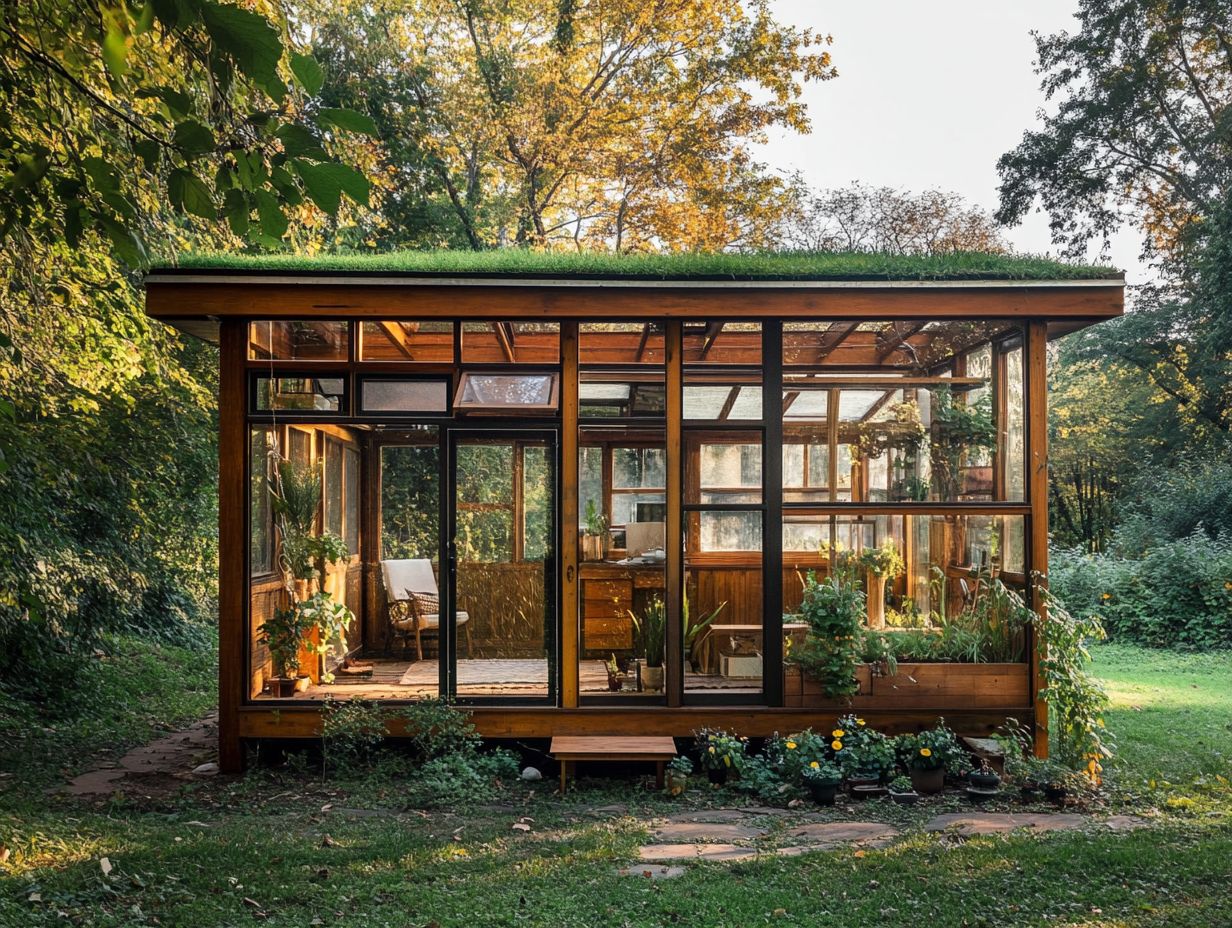
The availability and cost of sustainable materials are crucial considerations for builders and homeowners. This significantly impacts the feasibility of creating eco-friendly homes. Striking the right balance between sourcing affordable materials and ensuring they meet sustainability standards is essential for anyone saving money by living in a tiny home.
Navigating the challenges of sourcing these materials can be daunting. Often, regional availability determines the types of materials accessible. In some areas, you may discover a complete lack of local suppliers.
Market trends influence prices, making it tough to stay on budget. Take reclaimed wood, for instance. While it can be a chic and eco-friendly choice, finding it at a reasonable price requires time and ingenuity.
On the flip side, bamboo products often come at a budget-friendly price and serve as a fantastic alternative to traditional hardwoods while still aligning with your sustainability goals.
Examples of Sustainable Materials for Tiny Homes
You ll find a wealth of sustainable materials expertly employed in tiny home construction. These examples illuminate their effectiveness and benefits in eco-friendly living.
Case studies reveal how forward-thinking builders harness materials such as reclaimed wood, bamboo, and high-efficiency appliances. By using recycled materials in tiny house designs, these choices create functional, stylish spaces that enhance aesthetics and champion financial freedom.
Case Studies and Success Stories
Case studies and success stories in tiny home construction serve as compelling examples of how sustainable materials can elevate living spaces. These real-world applications highlight innovative design, functionality, and the seamless integration of eco-friendly materials, reinforcing the advantages of the tiny house movement.
By exploring specific projects, you can examine the diverse range of sustainable materials used, from reclaimed wood to recycled metal roofing. A closer look uncovers challenges faced, such as zoning regulations which dictate land use and sourcing difficulties that tested builders perseverance.
Through collaboration and creative problem-solving, many navigated these hurdles, resulting in efficient, sustainable structures. The outcomes of these projects showcase the viability of tiny homes and provide insights into the best materials for tiny house construction, enriching the narrative of sustainability in construction.
These experiences illustrate the potential for tiny homes to drive positive change in building practices globally. Are you ready to transform your living space sustainably?
Tips for Incorporating Sustainable Materials into Tiny Home Construction
Incorporating sustainable materials into tiny home construction demands meticulous planning and access to trustworthy resources.
By prioritizing eco-friendly materials and making strategic design choices, you can craft functional and aesthetically pleasing spaces that resonate with the core principles of the tiny house movement, including sustainable design practices for tiny houses.
Best Practices and Resources
Adopting best practices for utilizing sustainable materials in tiny living can significantly enhance the quality and longevity of your eco-friendly home. By leveraging available resources, you can streamline your construction process while aligning your choices with your sustainability goals.
One effective approach is to prioritize locally sourced materials. It’s a win-win! You cut down on carbon emissions and boost local economies. Consider utilizing reclaimed wood, recycled metal, and sustainable paint options for tiny house interiors to further minimize your environmental impact.
Resources such as the U.S. Green Building Council’s website, “GreenBuildingAdvisor.com,” and insightful books like “The Energy-Wise Home” can provide you with invaluable knowledge. Organizations like Habitat for Humanity and the Sustainable Forestry Initiative offer guidance and access to sustainable materials to enhance your project.
Continuous education through workshops and online courses allows you to stay updated on evolving sustainable practices, ensuring your efforts yield lasting benefits for both your home and the environment.
Frequently Asked Questions
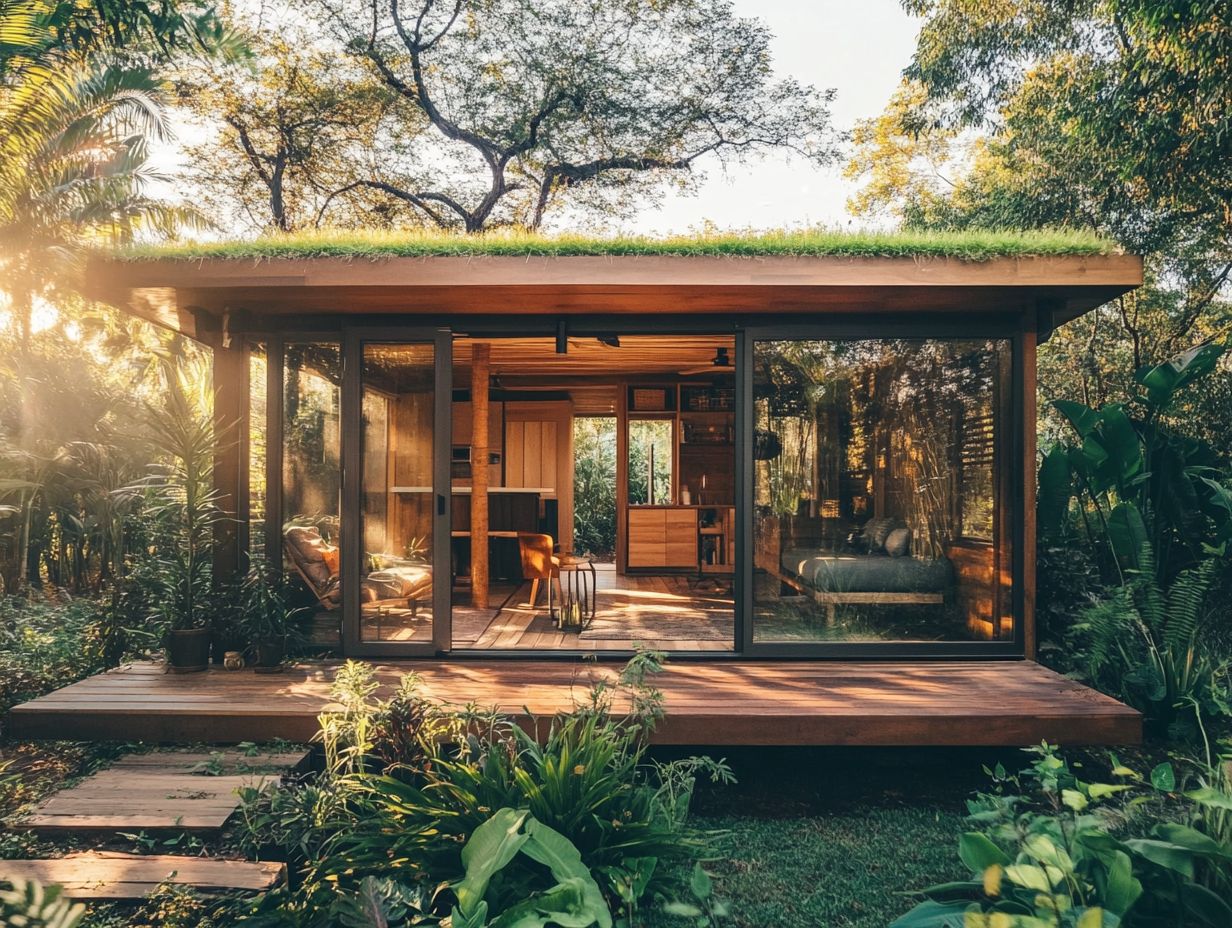
Sustainable building materials for tiny homes are materials that are environmentally friendly, socially responsible, and economically viable. They are designed to reduce potential negative impacts on the environment and promote a healthier and more sustainable way of living.
What are some examples of sustainable building materials for tiny homes?
Examples include reclaimed wood, bamboo, recycled metal, straw bales, and natural stone. These materials are renewable, non-toxic, and have a low carbon footprint.
Why is it important to use sustainable building materials for tiny homes?
Using sustainable materials helps reduce the carbon footprint of the construction process, promotes a healthier living environment, and conserves natural resources. It also supports the local economy and reduces waste in landfills.
Are sustainable building materials more expensive than traditional materials?
Sustainable materials may be more expensive upfront. However, they can save money on utility bills and maintenance costs in the long run. The cost of sustainable materials is decreasing as they become more mainstream.
Are there any disadvantages to using sustainable building materials for tiny homes?
Some sustainable materials may not match the strength or durability of traditional options. Additionally, sourcing materials can be more challenging in certain regions due to limited availability.
Can I make my tiny home entirely out of sustainable building materials?
Yes, it s possible to construct a tiny home entirely from sustainable materials. However, this may require more research and planning to ensure all materials are eco-friendly and meet building codes. It could also increase overall construction costs.
Ready to start your sustainable building journey?


